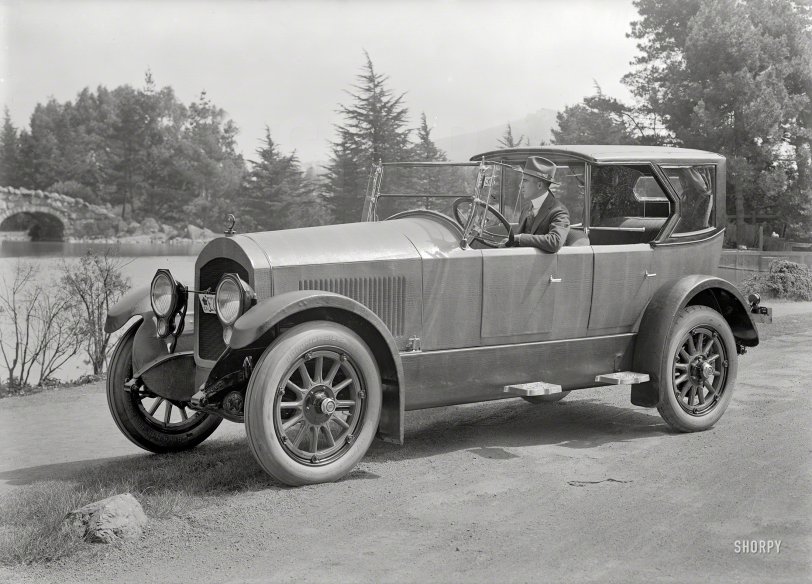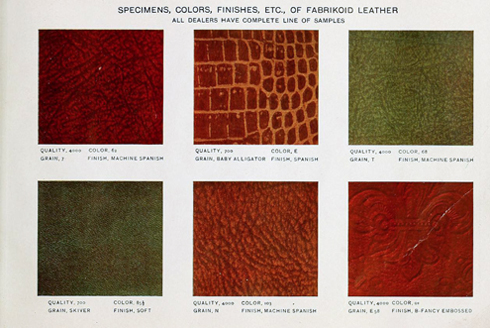


Framed or unframed, desk size to sofa size, printed by us in Arizona and Alabama since 2007. Explore now.
Shorpy is funded by you. Patreon contributors get an ad-free experience.
Learn more.

- Freeze Frame
- Texas Flyer wanted
- Just a Year Too Soon
- WWII -- Replacing men with women at the railroad crossing.
- Yes, Icing
- You kids drive me nuts!
- NOT An Easy Job
- I wonder
- Just add window boxes
- Icing Platform?
- Indiana Harbor Belt abides
- Freezing haze
- Corrections (for those who care)
- C&NW at Nelson
- Fallen Flags
- A dangerous job made worse
- Water Stop
- Passenger trains have right of way over freights?
- Coal
- Never ceases to amaze me.
- Still chuggin' (in model form)
- Great shot
- Westerly Breeze
- For the men, a trapeze
- Tickled
- Sense of loneliness ...
- 2 cents
- Charm City
- What an Outrage
- Brighton Park
Print Emporium
Predator: 1919

San Francisco circa 1919. "Cole touring car at Stow Lake, Golden Gate Park." Upholstered in alligator. 5x7 glass negative by Christopher Helin. View full size.
Marque Production
Cole Automobiles were assembled in Indianapolis, Indiana from 1909 to 1925 with prices in 1919 ranged from $2,595 to $3,795.
Total Cole production numbers vary depending on the source. Hemmings stated in 2013 that 35,267 Coles were produced, but many other sources list a total production of 40,700. Cole production in 1919 is listed as 6,225 in the book "Cars" by Adriana Brain, but Hemmings claims that the peak of production was 1916 with 5,160 made.
There is no doubt that in the post WWI depression Cole vehicle production dropped. During 1922 Brain states that 1,722 Coles left the factory. Production dropped further in 1923, and late in 1924 production ceased. These last cars were 1925 models (607 produced). Joseph Cole chose to liquidate his company early in 1925. He died on August 8, 1925 just before the liquidation was finalized.
Before company ended production a 1924 Cole paced the Indianapolis 500. Cole was friends with Speedway founder Carl Fisher, and Fisher decided to honor his friend by giving Cole's company the pace car responsibilities. Cole engineer Louis 'Lew' Pettijohn drove honorary race referee (judge) Henry Ford around the track in the pace car.
Approximately 70 Cole cars are known to still exist. Both the Cole Motor Car Company factory and his Indianapolis home are listed on the U.S. National Register of Historic Places.
A Wrap and a Rap
Rush1959 pegs it as a "wrap". When we weren't doing commercial and Air Force planes, my very last business included a "sideline" of vinyl wraps for everything from motorcycles to 18-wheelers.
At the last industry convention in Las Vegas, one could watch a pair of brand-new Rolls Royces being wrapped in everything from fake snakeskin to alligator and whatnot, over and over, for five days. (A travesty, really.)
This particular job would have my customer coming back in a very bad mood and all the profit on the job would be eaten up by the labor and materials to redo sections. Those bubbles on the left front fender and that detaching flap above the leaf spring this side of the right front wheel would get a do-over.
[Those "bubbles" are screw heads. -Dave]
Whenever I had a customer come in for a wrap, I always thought, "There's no accounting for taste", but the grumpy accountant loved the results.
Whenever I see one of our wraps rolling down the road, I'm surprised to see it intact these many years on but the prevailing emotion is joy that my old shop is now a funeral home and I'm not there (yet).
Questionable covering
Nevertheless, a handsome automobile. I particularly like the lines of the roof and rear windows - rather modern for the times.
Whatever happened to the manufacturer?
No wonder
I had never heard of this brand of car before. Regardless of the choice of "finish", that is one ugly vehicle. Anyone know how many of these were made?
Fabric covered cars
Likely to hold up about as well as vinyl covered automobile roofs did in the 1970s, which were a stylish but rust-attracting option available on just about every make from lofty Rolls Royces to humble Pintos.
Luxury V8
By 1919 Cole had dropped all 4 and 6 cylinder vehicles and were making only big V8s. Roadsters, touring, it didn't matter -- all had V8s.
Wow
I thought the caption meant the SEATS were upholstered in alligator, not the entire car. Oddly enough the seats are cloth, guess they didn't want to get too carried away. It certainly makes a statement, I'm not sure what the statement is.
Helluva Long Hood
Just imagine crashing with that vehicle - the driver wouldn't be there until some minutes had passed.
Fabrikoid Brochures
Skinned
Leather coated for your driving pleasure. Don't drive it anywhere in Africa unless you want a wildcat to mate with it.
Not a 'Touring Car'
It's a body style known as a "Sedanca DeVille."
Alligator
You want alligator because it doesn't mind getting wet.
The gift that keeps giving -- and taking
For the man who has everything.
That's a wrap
The original vinyl body wrap! I think that thing rusted to bits in no time.
Red Green says:
"Wrinkles in your Duct Tape is a sign of poor workmanship". The same can be said for this travesty.
Color/Covering on car?
Is that a leather look? Was that common?
[We've seen an alligator-finished auto from this period before. As mentioned in the comments, the material used was Dupont Fabrikoid. -tterrace]

























On Shorpy:
Today’s Top 5